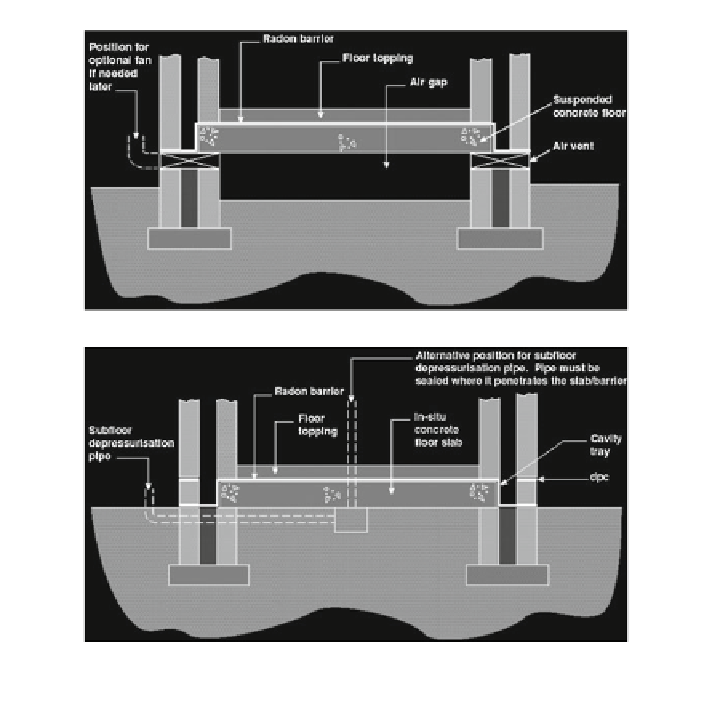Civil Engineering Reference
In-Depth Information
(a)
(b)
Fig. 1 Radon protection: a to a suspended concrete floor and b to a ground bearing concrete
floor slab (Scivyer
2001
)
mentioned that in 80 % of houses with a sub-slab piping connected to an operating
fan, radon concentration was below the action level of 200 Bq/m
3
. In houses with
piping but no fan, however, the corresponding fraction was only 45 %. The cor-
responding median values of radon concentration in these houses were 55 and
220 Bq/m
3
, respectively.
They also mentioned that sub-slab piping without a fan had no remarkable
effect on radon concentration. Other authors (Arvela et al.
2005
) report the
development of a new construction for an airtight joint between the foundation
wall and the floor slab. In the new sealing practice, bitumen felt will be installed
underneath the floor slab in direct contact with the concrete slab (Fig.
3
).
Those authors also mention that a group of houses with this new measure
located in areas with radon concentration exceeding 200 B/qm
3
show low indoor
radon concentrations (20-60 Bq/m
3
).
Groves-Kirkby et al. (
2006
) mentioned that post-construction remediation using
conventional fan-assisted sump technology proved to be extremely effective in

